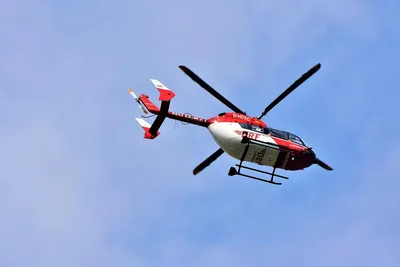Understanding Kilimanjaro Rescue and Evacuation on Mount Kilimanjaro
Climbing Mount Kilimanjaro is an incredible adventure, but safety remains a top priority. Altitude Sickness, injuries, or extreme fatigue can sometimes make it necessary for climbers to descend early—or be evacuated. Kilimanjaro rescue systems include ground support, stretchers, and in more critical cases, helicopter evacuation. Helicopter rescues are not only rare but costly and dependent on weather and location. Understanding how the rescue system works and how much a helicopter evacuation costs can help you better prepare for a safe and informed climb.

How Does Rescue Work on Mount Kilimanjaro?
Mount Kilimanjaro has an established rescue system managed by the Kilimanjaro National Park Authority (KINAPA) in collaboration with licensed tour operators. When a climber becomes ill or injured, the mountain crew notifies rangers and initiates a ground evacuation, often using stretchers like the locally known “ kilimobile.” In severe cases, particularly at higher altitudes, a helicopter evacuation may be arranged through a third-party provider.
When is a Helicopter Rescue Needed?
Helicopter evacuations are used in emergency situations when a climber is suffering from severe altitude sickness (like HAPE or HACE), broken bones, heart complications, or if the terrain makes ground evacuation too slow or dangerous. Helicopter rescues are only available at certain altitudes, usually below 4,500 meters, and require clear weather and a flat area for landing.
Where Can Helicopters Land on Kilimanjaro?
- Shira Plateau (approx. 3,840m) – accessible and often used for emergency landings
- Barranco Camp – sometimes suitable if weather permits
- Horombo Hut – a popular evacuation point on the Marangu Route
- Below Barafu Camp – weather and terrain permitting, it’s possible in emergencies
Helicopter Rescue Providers
Rescues are typically conducted by Kilimanjaro SAR (Search and Rescue), a leading helicopter evacuation service on the mountain. Their base is in Moshi, and they use Eurocopter AS 350 B3 helicopters capable of flying at high altitudes with medical equipment and trained personnel on board.
How Much Does a Helicopter Rescue Cost on Kilimanjaro?
The average cost of a helicopter evacuation from Kilimanjaro ranges between USD $5,000 and $10,000 depending on the pickup location and severity of the case. These costs include:
- Helicopter fuel and flight time
- Medical personnel and onboard emergency care
- Transport to a medical facility in Arusha or Nairobi
Important: Most travel insurance plans will only cover helicopter evacuation if you have high-altitude trekking coverage. Always confirm with your insurance provider before your trip.
Who Pays for the Rescue?
If you have proper travel insurance with high-altitude trekking and emergency evacuation coverage, the costs are typically reimbursed. Without insurance, you’ll be responsible for the entire rescue cost, which can be financially overwhelming. This is why comprehensive travel insurance is essential before climbing Kilimanjaro.
Ground Rescue System
For non-critical cases, park rangers and guides use stretchers or assist the climber down the mountain on foot. The ‘kilimobile’ stretcher is a wheeled device pulled and pushed down rugged paths. Though slower than a helicopter, it"s effective and included in your park fees if done within park jurisdiction.
How to Prepare for Emergencies on Kilimanjaro
- Choose a certified operator that prioritizes safety and includes rescue support.
- Ensure your guide has first-aid training and oxygen supply.
- Get medical clearance before your trip if you have pre-existing conditions.
- Climb slowly to acclimatize and reduce altitude sickness risks.
- Carry insurance that covers helicopter rescue and altitude-related emergencies.
Frequently Asked Questions
Does every climber need rescue insurance?
Yes. Due to the high costs of helicopter evacuation, rescue insurance with high-altitude trekking coverage is strongly recommended before starting the climb.
How quickly can a helicopter arrive on Kilimanjaro?
If weather allows and the pickup zone is accessible, a helicopter can typically reach the site within 1 to 2 hours from Moshi base.
Can helicopters reach the summit?
No. Helicopters cannot land at the summit or at altitudes above 4,500 meters due to air pressure and safety limitations. Ground descent is required from higher elevations.
What should I do in case of an emergency?
Inform your guide immediately. They will assess the situation, notify park rangers, and coordinate rescue. Guides are trained to handle emergencies efficiently.
For expert Kilimanjaro planning and guided climbs with full safety support, contact us via WhatsApp: +255 678 992 599 or email jaynevytours@gmail.com.
SEND US A MESSAGE
Our team will reply soon
RELATED PACKAGES
- Baraka Aquarium and Nungwi Village in Zanzibar
- Diving Tour in Zanzibar
- Zanzibar Sky Diving Tour
- Dolphin Snorkeling Sandbank Tour in Zanzibar
- Horse Riding Tour in Zanzibar
- Jet Ski Tour in Zanzibar
- Jozani Forest Visiting in Zanzibar
- Quad Bike Tour in Zanzibar
- Traditional Sunset Dhow Cruise Tour in Zanzibar
- The Best Stone Town Tour in Zanzibar
- Zanzibar Butterfly Tour
MORE PACKAGES
- Mount Kilimanjaro
- Ngorongoro Crater
- Serengeti National Park
- Tarangire National Park
- Lake Manyara National Park
- Zanzibar Island
- East Africa Packages
- Tanzania Safari From Zanzibar
- Kenya packages
- Rwanda Packages
- Uganda packages
- Mikumi National Park
- Kitulo National park
- Mkomazi National park
- Selous (Nyerere National Park)
